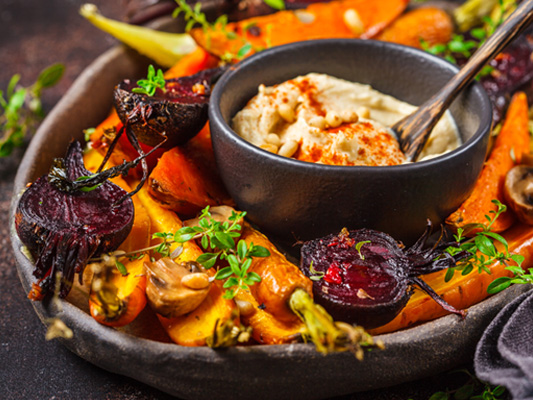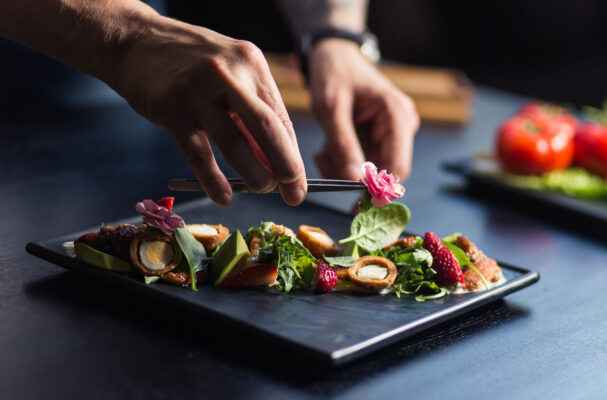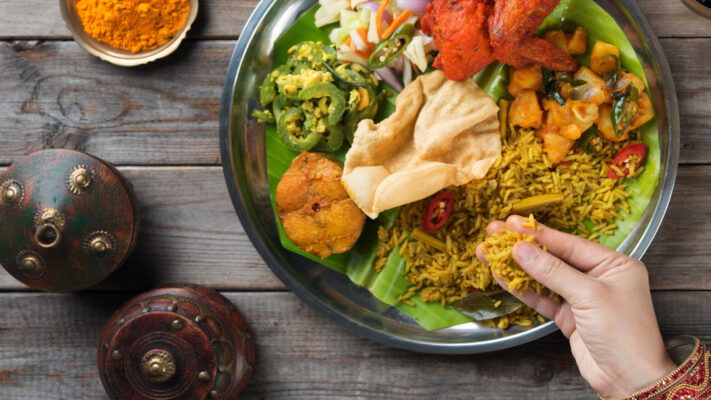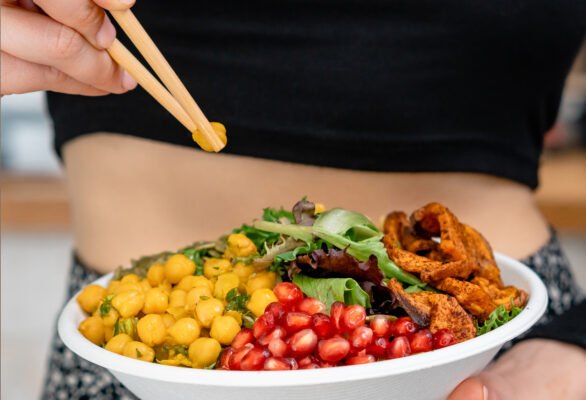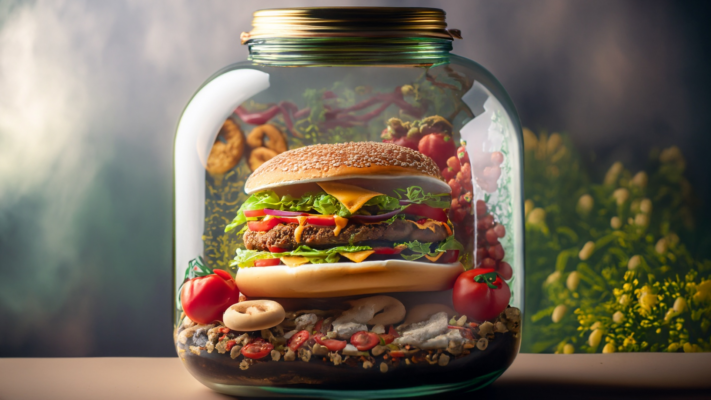I would like to talk here about something called tactile hunger. The other day I talked to my friend, and when I mentioned “touch hunger,” he burst out laughing – “What on earth is that?!” Well, tactile hunger is all about our deep desire for physical touch and connection with others. While it may not seem directly related to food, it actually has a big impact on our overall well-being and the way we eat.
The Magic of Touch: More Than Just Skin Deep
Tactile hunger goes beyond our taste buds and plates; it also shines a light on the importance of physical touch and connection in our lives. You see, touch is a basic human need, deeply rooted in our biology and social nature. In fact, studies have shown that physical touch helps release oxytocin, the “feel-good” hormone, which reduces stress, fosters bonding, and contributes to a sense of well-being.

Craving Touch
You see, getting enough physical touch is crucial for our well-being. In fact, if we don’t get enough of it, we can experience what’s called “skin hunger,” (1) which can lead to all sorts of health and emotional issues.
Now, one way to get more touch in our lives is through massage. It’s not just a luxury; it actually has tons of proven health benefits! (2) We’re talking about helping premature babies gain weight, improving lung function in kids with asthma, managing blood sugar levels for diabetics, and even easing anxiety and depression. If there were a pill that could do all that, we’d be all over it, right? Well, turns out massage can do the trick by lowering stress hormones and boosting those feel-good hormones like dopamine, serotonin, and oxytocin.
But here’s the thing: in today’s world, we’re all so connected through our devices, and there’s a lot of concern about boundaries and personal space. It’s no wonder that people are a bit hesitant when it comes to physical touch. There was even a study (3) that showed friends from different countries interacting in a café, and guess what? English people didn’t touch each other at all, while Americans touched only twice an hour. On the other hand, French and Puerto Rican friends were touching way more often – up to three times a minute!

Getting in Touch: A Healthier, Happier You
We need to recognize just how important touch is for our overall well-being. It’s not only about feeling close to others emotionally but also about boosting our physical health. Let’s make sure we’re finding healthy ways to get in touch. 💞
When we lack touch in our lives, we may experience feelings of loneliness, anxiety, and even depression. This emotional void can make us more vulnerable to seeking comfort through other means – like turning to food as an emotional crutch. Emotional eating can easily become an unhealthy coping mechanism, leading to a vicious cycle of negative emotions and overeating.

From Hugs to Snacks: How Touch Affects Our Eating Habits and Its Connection to Food
As social beings, we all yearn for that comforting feeling that comes from a warm hug, holding hands, or even just a reassuring pat on the back. Now, when we don’t satisfy our tactile hunger, we might feel a sense of loneliness or emotional emptiness, which can lead us to seek out other forms of comfort – and that’s where food comes into the picture. We may turn to food as a way to fill the void left by the lack of touch in our lives, using it to soothe ourselves and temporarily alleviate our emotional discomfort.
For some of us, certain food textures or sensations can provide a sense of comfort that’s similar to a loving touch. Imagine the creaminess of ice cream, the warmth of a bowl of soup, or the softness of a piece of chocolate melting in your mouth, creating a sense of satisfaction that mimics the experience of being touched or held, feeling a bit like being wrapped up in a cozy hug or snuggling under a warm blanket.
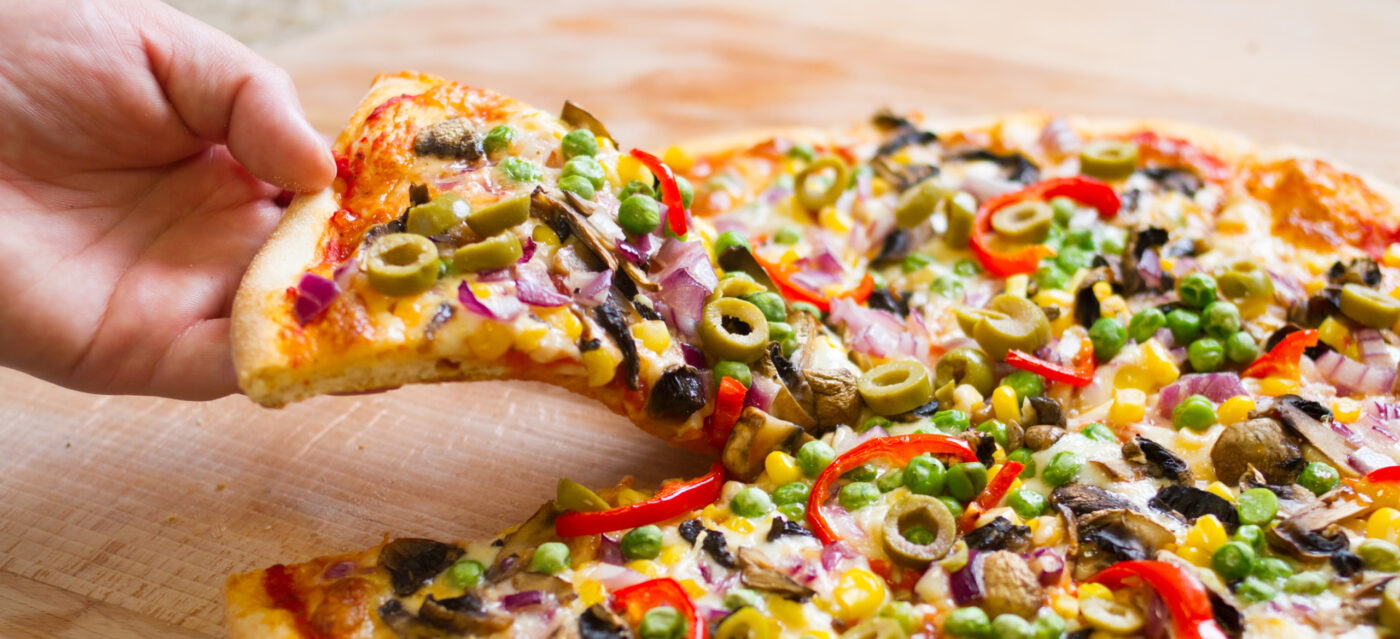
Cuddles, Crunches, and Cravings: A Healthier Approach to Emotional Eating
Becoming more aware of our tactile hunger and addressing it in healthier ways can help break this cycle. For example, hugging a loved one, getting a massage, or engaging in other forms of physical contact can provide the comfort we crave without resorting to food. We can also explore activities that promote touch and connection, such as partner workouts, dancing, or cuddling with a pet.
Now, have you ever noticed that you crave crunchy foods when you’re stressed or anxious? I have. That could be your body’s way of seeking sensory stimulation to help cope with those emotions. Once you recognize this, you can make a more mindful choice, like opting for a healthier crunchy snack like apples with peanut butter (those are my go-to 😋), bell peppers, cucumbers, nuts, or something else that will give you the crunch you are actually craving for.
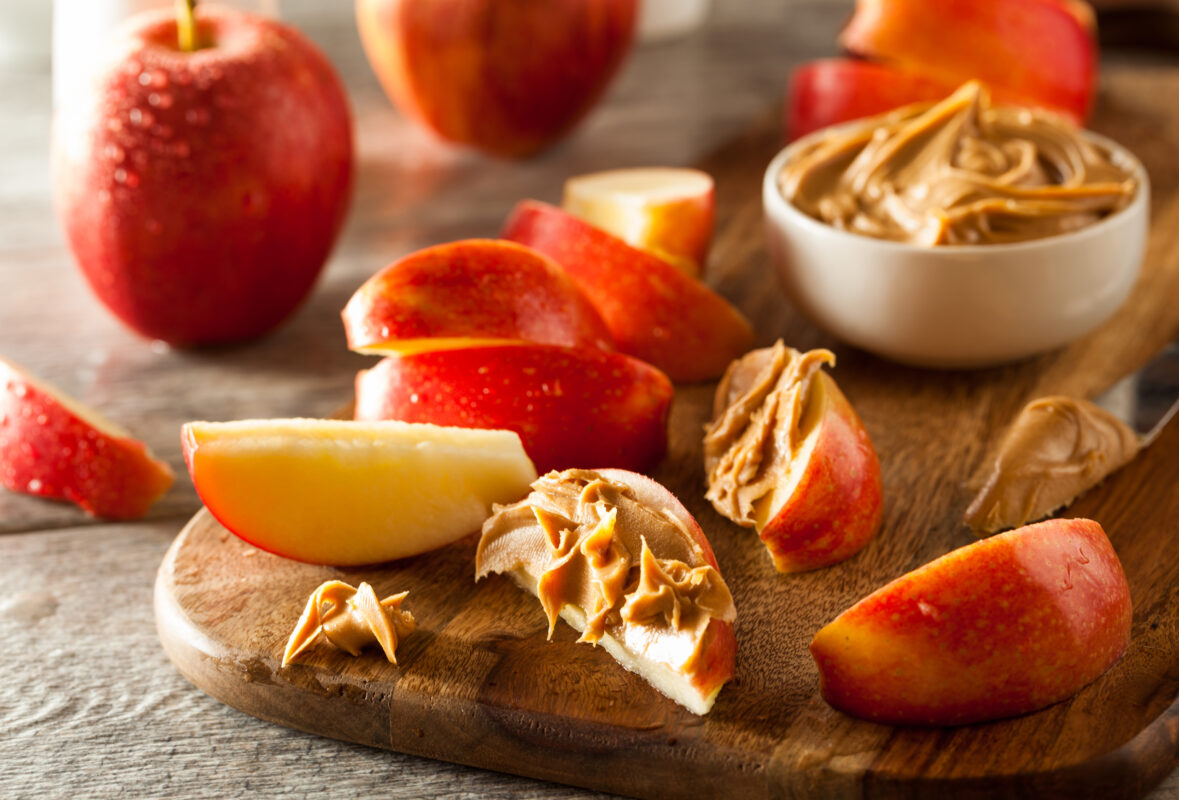
By acknowledging and nurturing our need for touch, we create a more balanced emotional landscape that reduces our reliance on food for comfort. Instead, we can turn to healthier alternatives that truly nourish our bodies, minds, and souls. And in doing so, we’ll be better equipped to make mindful choices about our eating habits and overall well-being.
Finger-Licking Fulfillment: How Cooking Feeds Our Sensory Cravings
Have you ever found yourself in the kitchen, whipping up a meal from scratch, only to discover that once you’ve finished creating your culinary masterpiece, you’re not even hungry but amazingly satisfied? I find myself in this position quite often. It’s all about the sensory experiences that come alive during the process, especially that often overlooked sense of touch. So let’s explore how cooking from scratch can satisfy our “tactile hunger” and make us feel more connected and fulfilled.
When we cook from scratch, we get to indulge in a little tactile exploration, satisfying our need for touch in a truly meaningful way.
Imagine this: You’re kneading dough for a homemade pizza, feeling the smooth, elastic texture between your fingers as you work the ingredients together. Or maybe you’re chopping up a colorful array of veggies for a stir-fry, the satisfying crunch echoing through the kitchen as you slice through each one. These tactile moments are where the magic happens.
As you cook from scratch, you’re inevitably engaging with the ingredients on a deeper level, forming a connection with the food you’re about to enjoy. You’re not just making a meal; you’re engaging in the experience, a sensory feast that satisfies your tactile hunger and nourishes your soul.
And while you’re at it, you’re also stimulating your other senses. The fragrant aroma of spices wafts through the air, the sizzle of vegetables in a hot pan fills your ears, and the vibrant colors of fresh produce create a visual feast. All these sensory delights weave together to create an all-encompassing satisfaction that goes beyond just filling your stomach.
And if, in the end, when you find that you’re not even hungry (or not as hungry) after cooking, it’s because you’ve been feeding your senses all along. Your tactile hunger has been satiated by the wonderful process of cooking.
Cooking from scratch truly is a sensory feast that goes beyond filling our bellies. By engaging with the ingredients through touch, we’re satisfying our tactile hunger and connecting with our food on a deeper level. All these sensory experiences – the enticing aromas, the sizzle of vegetables, and the vibrant colors – come together to create a sense of satisfaction and wholesome nourishment.
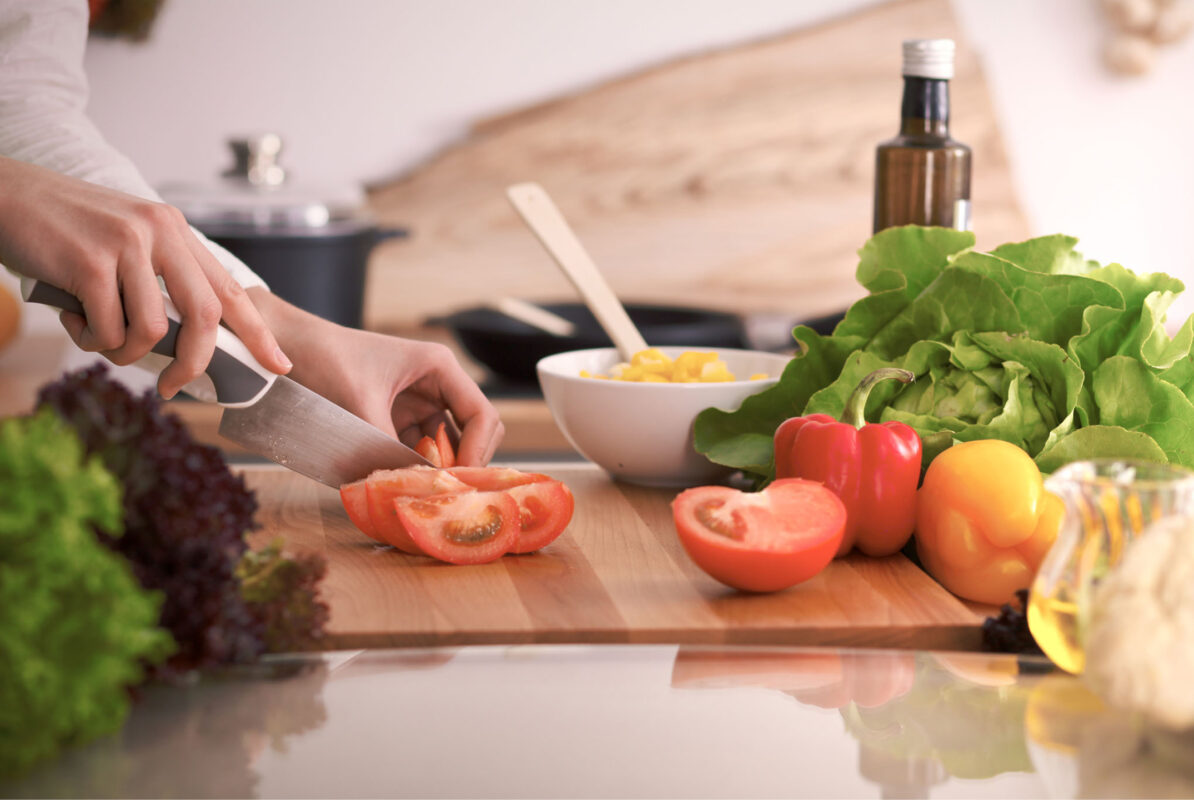
Tender Touch Bites: Nurturing Tactile Hunger and Balanced Eating
- Embrace everyday moments of touch: Share a warm hug with a loved one, hold hands, or give a friendly pat on the back.
- Find activities that bring you joy and connection: Consider trying partner workouts, dancing, or simply spending time with a furry friend.
- Treat yourself to a soothing massage or explore self-massage techniques for a relaxing and comforting experience.
- When seeking comfort through food, opt for nourishing options that make you feel good: choose snacks with a variety of textures to satisfy your tactile cravings in a mindful way.
- Be kind to yourself and practice awareness of your emotions and tactile hunger: Acknowledge your needs and explore gentle ways to fulfill them.
- Connect with supportive friends and family who understand the importance of touch and enjoy shared activities that promote physical connection.
- Hugging for happiness: Hugging not only provides comfort but also boosts our immune system, reduces stress, and increases oxytocin levels, leading to a stronger sense of connection and trust between individuals.
- High fives and fist bumps: These simple gestures of camaraderie and encouragement between teammates, coworkers, or friends can foster a sense of belonging and improve team dynamics, leading to better collaboration and performance.
- Holding hands: This intimate gesture can help couples feel more connected, secure, and bonded, as it increases oxytocin and reduces cortisol levels, leading to a sense of relaxation and affection.
- Petting animals: Studies have shown that petting animals like dogs and cats can lower blood pressure, reduce stress, and release oxytocin, promoting relaxation and well-being.
- Playful physical interactions: Play-fighting, tickling, or engaging in light-hearted physical activities with friends and loved ones can help create a sense of connection, laughter, and joy, which in turn strengthens relationships and overall well-being.
- Cuddling with loved ones: Snuggling up with a partner, family member, or even a stuffed animal can provide comfort, security, and warmth, leading to a more profound sense of relaxation and connection.
PRACTICES
Practice 1
Embracing the Power of Touch
Close your eyes and focus on the different feelings on your skin. Notice how your clothes gently touch your body as you breathe. Where do these sensations feel the softest? Where are they the strongest?
Explore your surroundings with the goal of discovering different textures. Use your hands, face, or even your feet to do so. How many textures can you find? Wood, porcelain, glass, carpet, warm fur, stone, rough brick, silky fabric, toothbrush bristles, and more.
Practice 2
Did you ever notice that a lot of skincare products have food names? Some popular creams have flavors like “pomegranate and mango,” “strawberry and guava,” “cucumber and melon,” “vanilla cream,” and “Greek yogurt.” When you put on “coconut body butter” or “peppermint leg gel,” you’re not just touching your skin – you’re also “feeding” it.
Nourishing Touch Hunger
Research shows that massages can be really good for people of all ages. Maybe you already get massages from a professional, or you have a caring partner who loves to cuddle or give you a back scratch. If not, try this simple exercise to give yourself some loving touch.
Sit comfortably with your eyes closed, and press your palms together. Think about how your hands help and care for each other all day long. Let them touch kindly.
Rest your hands, palms up, on your thighs. Imagine your hands are full of gentle kindness, like you’re touching a beloved child, pet, or friend. Tenderly put one hand on the opposite upper arm and hold it there for a bit. Then switch, placing your other hand on the opposite upper arm.
Return your hands, palms up, to your thighs, letting them fill up with kindness and care. Gently place both hands over your eyes and softly touch or stroke your face.
Repeat this exercise, filling your hands with kindness and placing them on different parts of your body, like your heart, stomach, or any area that needs attention. You can also try lightly stroking or giving a gentle massage. Think about massaging a part of your body that needs care using lotion or one of the “skin foods” mentioned earlier.
Practice 3
Embrace of Self
Wrap your arms around your chest or shoulders, giving yourself a supportive hug. Feel the warmth and comfort of your embrace. Hold the hug for a few slow deep breaths, and notice how it makes you feel. Practice the Embrace of Self whenever you need a moment of reassurance or self-connection
Be Alive 🌱
Love ❤️, Julia
References:
(1) Skin hunger, or touch deprivation, is a term used to describe the emotional and physical consequences of not receiving enough physical touch. According to a study by Field (2010), touch deprivation has been linked to numerous negative health effects, including depression, anxiety, irritability, and even a weakened immune system.
(2) a study by Diego et al. (2005) found that premature infants who received massage therapy experienced increased weight gain and improved development. The researchers attributed this to the stimulation of the vagus nerve, which plays a crucial role in digestion, metabolism, and growth. – In another study, Field et al. (1998) demonstrated that massage therapy can improve lung function in children with asthma. The researchers found that after regular massages, the children exhibited increased peak air flow, reduced anxiety, and improved overall pulmonary function. – Massage therapy has also been shown to help manage blood sugar levels in individuals with diabetes. A study by Hernandez-Reif et al. (2001) discovered that participants who received regular massages experienced decreased blood glucose levels and improved glycemic control. – A meta-analysis by Hou et al. (2010) found that massage therapy was effective in alleviating anxiety and depressive symptoms, partly due to its ability to reduce stress hormone levels (cortisol) and increase feel-good hormones such as dopamine, serotonin, and oxytocin
(3) I’m referring to a classic observational study conducted by Sidney Jourard, a Canadian psychologist, in the 1960s. Jourard observed nonverbal communication, specifically physical touch, among friends in various countries. His study revealed cultural differences in the frequency of touch during social interactions. He found that English people didn’t touch each other at all, Americans touched twice an hour, French individuals touched 110 times, and Puerto Ricans touched 180 times per hour. These findings highlighted the significant role that culture plays in shaping our comfort with touch and physical closeness.
Mindful Eating 🥢
Mindful Eating Meditation
GUIDED MEDITATIONS 💗
DISCLAIMER: The materials and the information contained on the Positive Pranic website are provided for general and educational purposes only and do not constitute any legal, medical, or other professional advice on any subject matter. None of the information on our videos is a substitute for a diagnosis and treatment by your health professional. Always seek the advice of your physician or other qualified health providers prior to starting any new diet or treatment and with any questions you may have regarding a medical condition. If you have or suspect that you have a medical problem, promptly contact your health care provider.



